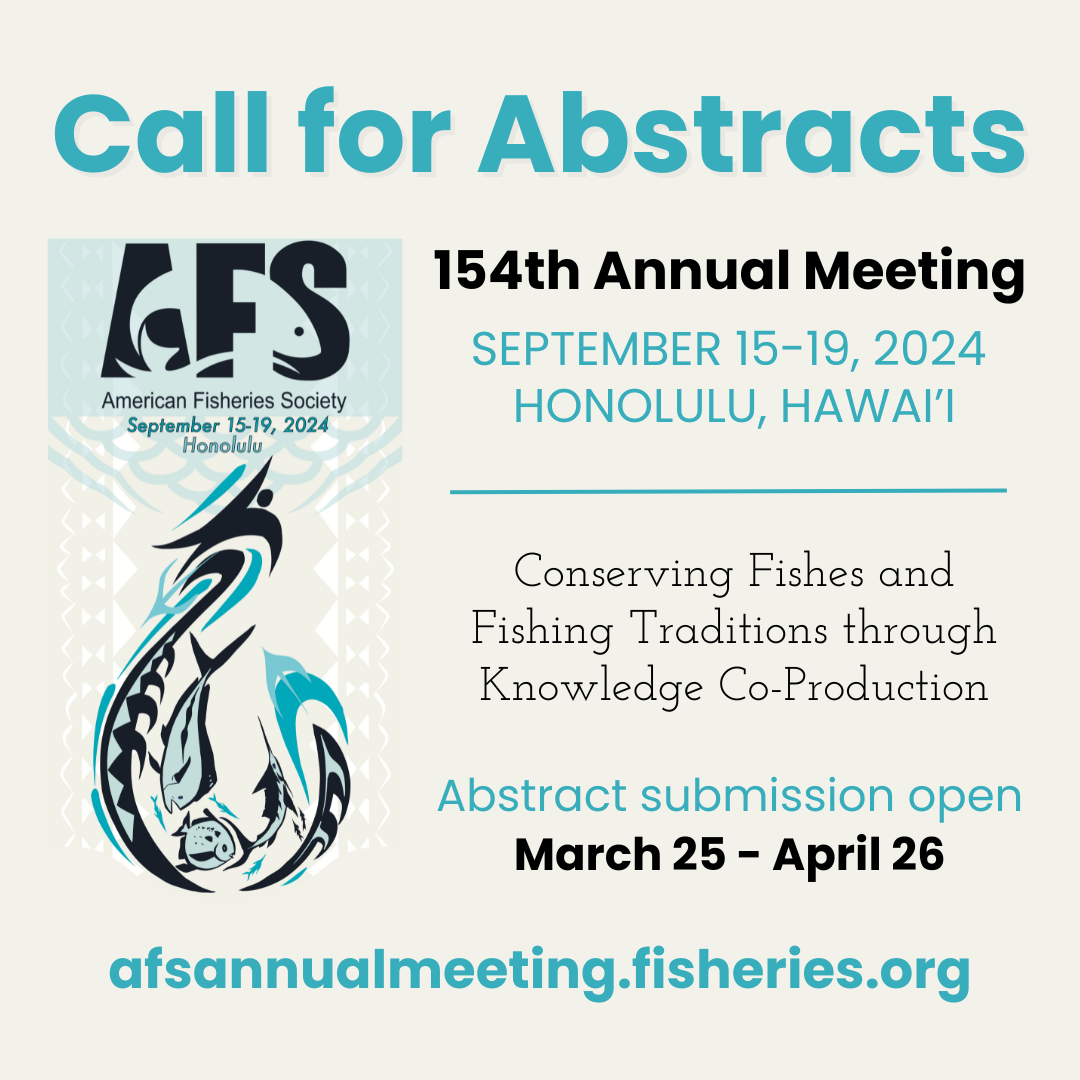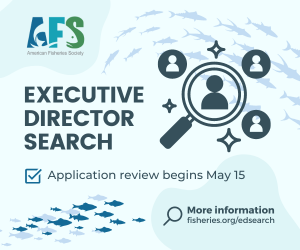April 12, 2019
Mr. Andrew R. Wheeler
Administrator
U.S. Environmental Protection Agency
1200 Pennsylvania Avenue, NW
Washington, DC 20460
Mr. R.D. James
Assistant Secretary of the Army for Civil Works
U.S. Army Corps of Engineers
441 G Street, N.W.
Washington, D.C. 20314
Via regulations.gov: Docket ID No. EPA-HQ-OW-2018-0149
Re: Revised Definition of “Waters of the United States” (84 FR 4154; Docket ID No. EPA-HQ-OW-2018-0149)
Dear Administrator Wheeler and Assistant Secretary James:
On behalf of the more than 20,000 members of the American Fisheries Society (AFS) and The Wildlife Society (TWS), we respectfully submit the following comments in response to the proposed rule (proposed Rule), “Revised Definition of ‘Waters of the United States’” (84 FR 4154; Docket ID No. EPA-HQ-2018-0149) published in the Federal Register on February 14, 2019.
AFS is the world’s oldest and largest professional society of fishery and aquatic scientists and managers. The Society seeks to improve the conservation and sustainability of fishery resources and aquatic ecosystems by advancing fisheries and aquatic science and promoting the development of fisheries professionals.
TWS and its network of affiliated chapters and sections represent professional wildlife biologists, managers, and educators dedicated to excellence in wildlife stewardship. The Society’s mission is to inspire, empower, and enable wildlife professionals to sustain wildlife populations and habitat through science based management and conservation.
Our societies are strongly opposed to the proposed Rule. We greatly value the country’s clean waters and healthy aquatic ecosystems as they are critical to maintaining fisheries, ecosystem services, and biodiversity. The limited protections proposed for our nation’s waters under the proposed Rule threaten fish, fisheries, and the terrestrial wildlife and human populations that rely on them, and places the highly valued ecosystem services that are derived from these systems in great peril.
AFS and TWS fully support the definition of Waters of the U.S. (WOTUS) in the 2015 Clean Water Rule (2015 CWR), which was overwhelmingly supported by peer-reviewed science. The EPA’s Office of Research and Development prepared a comprehensive scientific report to accompany the 2015 CWR, the “Connectivity of Streams and Wetlands to Downstream Waters: A Review and Synthesis of the Scientific Evidence” (herein the “Connectivity Report” but which was described in the 2015 CWR as the “Science Report”). The Connectivity Report synthesized more than 1,200 peer-reviewed publications and provided the technical basis for the 2015 CWR. The 2015 CWR also underwent an extensive stakeholder review process. Since the completion of the Connectivity Report, substantial additional literature has emerged that reaffirms the report and the 2015 CWR (e.g., Cohen et al. 2016, Rains, et al. 2016, Fritz et al. 2018, Harvey et al. 2018, Leibowitz et al. 2018, Schofield et al. 2018, Colvin et al. 2019.) The 2015 CWR reflects the best available science in regards to connectivity, but unfortunately, the proposed Rule is unsupported by peer-reviewed science. It was developed without the critical scientific analysis that supported the 2015 CWR rulemaking process and it has not been subjected to a rigorous independent review process.
Further, the proposed Rule fails to align with the original intent of the Clean Water Act to ‘to restore and maintain the chemical, physical, and biological integrity of the Nation’s waters.’ This can only be achieved if the definition of WOTUS is grounded in sound science and recognizes all five parameters of connectivity (hydrologic, chemical, physical, biological, ecological), as documented in the Connectivity Report (EPA 2015). Unfortunately, the proposed Rule only recognizes a limited subset of connectivity and relies on flow permanence and physical abutment as measures of jurisdiction while arbitrarily ignoring other aspects of physical connectivity such as bed, banks, and high-water marks, and chemical, biological and ecological connectivity that were incorporated in the 2015 CWR. The proposed Rule is inconsistent with more than a half century of scientific research that demonstrates that the integrity of “traditionally navigable” waters fundamentally depends on ephemeral, intermittent, and perennial headwater streams, as well as the many associated lakes, wetlands, and off-channel habitats (USEPA, 2015).
The proposed Rule would eliminate protections from many headwaters across the country. Headwaters are broadly defined as portions of a river basin that contribute to the development and maintenance of downstream navigable waters including rivers, lakes, and oceans. Headwaters include wetlands outside of floodplains and small streams with permanent flow, intermittent flow, and ephemeral flows. The waters and wetlands in the upper reaches of a watershed, including ephemeral, intermittent, or perennial streams, affect downstream waters and wetlands; that is, they are hydrologically, chemically, physically, biologically and ecologically connected to what happens downstream. Aquatic ecosystems depend upon transfer of chemical components and organic materials to support the life in and around their shores. Headwater streams act as a conveyor of nutrients, a path for migrating organisms such as fish and wildlife, and a drainage and storage system for floodwaters. These and other ecosystem services depend on watershed connectivity.
AFS convened a group of scientists to look at the value of headwater streams for their critical importance to fish and fisheries. As detailed in their report, “Headwater Streams and Wetlands are Critical for Sustaining Fish, Fisheries and Ecosystems,” (Colvin et al. 2019) the loss of Clean Water Act protections for headwaters would diminish ecosystem services provided by those waters, increase the threat to imperiled species, affect commercial and recreational fisheries, and degrade fishes of great cultural value to Native Americans and the recreating public. Headwaters are key to the sustainability of fish stocks in both upstream and downstream waters and should be protected.
In addition to the loss of protection for headwaters, the proposed Rule seeks to eliminate protections for wetlands that do not abut or have a direct hydrologic surface connection to other WOTUS. Wetlands provide essential ecosystem services such as protection of drinking water quantity and quality, provision of flood storage, storm damage mitigation, resilience against sea level rise and drought, and essential fish, shellfish, waterfowl, and wildlife habitat. Wetland loss in some regions of the U.S. already approaches or exceeds 85% As documented in the Connectivity Report, wetlands that neighbor other waters of the United States, but are not necessarily abutting or having a direct hydrologic surface connection in a typical year, often exhibit functional connection with other WOTUS, and should be protected. These waters equal the size of West Virginia and the loss of ecosystem services they provide would be staggering.
In addition, unique, isolated wetlands like prairie potholes and vernal pools across the U.S. would be excluded from protection under the proposed Rule. These unique wetlands ecosystems are essential for maintaining regional biodiversity and buffering floods and droughts. For example, the Prairie Potholes of the Upper Midwest provide habitat for 50% of North American migratory waterfowl and are often the only surface water source. Further reductions in regionally unique wetlands will lead to irrevocable losses in biodiversity and ecosystem services and should be protected.
The proposed rule is an unprecedented rollback of the Clean Water Act, yet the agencies have not offered an analysis of the impacts of the new rule nor any rigorous scientific or economic evaluation of the rule change. Removing existing protections from the millions of miles of ephemeral headwater streams in the US will only exacerbate the transformation of historically perennial streams and rivers into highly vulnerable intermittent and ephemeral streams and rivers driven by climate change and extensive and intensive land use. For example, as a result of climate change, land use changes, and water withdrawals, one-third (125,000 miles) of the mapped perennial stream length in the conterminous western US was found to have been reduced to non-perennial streams or even no longer a stream. The decline varied from over half of the stream length in the Southwest, to one-third in the Great Plains, to one-fourth in the western mountains (Stoddard et al. 2005). Similarly, Perkin et al. (2017) estimated a loss of one-fifth (334 miles) of the stream length in the Upper Kansas River Basin, which was linked to ground-water pumping and climate change. The losses not only pertain to small streams. For example, the once perennial Gila, lower Colorado, Grande, and Nazas Rivers are now intermittent or ephemeral as a result of anthropogenic pressures–including climate change (Hughes et al. 2005).
The agencies’ assessment of annual avoided costs from the proposed Rule fails to recognize the huge financial losses to the country as a result of reduced fisheries. Nationally, freshwater fishing contributes $41.9 billion and over 500,000 jobs our economy, often in otherwise economically depressed regions (Allen et al. 2018). Without continued protection of headwaters necessary for valuable recreational fisheries and endangered species, economically vital fisheries are likely to decline or collapse and endangered species are likely to become further imperiled. A shift of this magnitude merits a full assessment of the risks of eliminating protections for so many waterways, as well as the justification for doing so.
In conclusion, AFS and TWS strongly oppose the proposed Rule, strongly support the 2015 CRW, and reject any re-definition of WOTUS that is not based in sound, peer-reviewed science. The proposed redefinition of WOTUS will make it impossible to achieve the objectives of the Clean Water Act because it excludes numerous waters and wetlands that directly affect the chemical, physical, and biological integrity of primary waters. The loss of protections for our nation’s waters called for in the proposed Rule would have grave consequences for fish and fisheries and would have far-reaching implications for fish, wildlife, and their habitats, as well as the thousands of economies dependent on those systems. We urge you to revise the proposed Rule in accordance with well-established science on connectivity that will ensure the chemical, physical, and biological integrity of our nation’s waters are restored and maintained.
Thank you for your consideration.
Sincerely,
Douglas J. Austen, Ph.D.
American Fisheries Society
Gary C. White, Ph.D., CWB
The Wildlife Society







